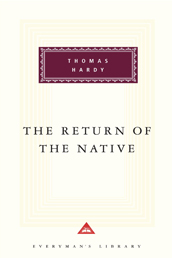

The often implausible plot is manipulated to enable such intensities, leaving the narrative connections between them sometimes strained or perfunctory. Yeobrights walk across the Heath, Wildeve and Eustacia dancing under the moon. It returns to the memory less as a developing story than as a sequence of vignettes, many of them nocturnal: the flaring bonfire of the opening chapters, Eustacia peering through the darkness with the aid of a telescope, Venn and Wildeve gambling by the light of glow-worms, Mrs. Central to the story are the fatal misunderstandings, frustrations and disappointments to which this unlucky mismatch gives rise.Įven more than most of Hardys novels The Return of the Native is intensely episodic.


She is excited from the moment she hears of his arrival - ironically because he has come from an exotic place to which she longs to escape from what she feels to be the stifling oppressiveness of the Heath. As he sets about re-immersing himself in the subdued life of Egdon he attracts the love of a passionate local girl, Eustacia Vye. The returning native of the title is Clym Yeobright, who gives up well-paid but meretricious employment in Paris in the hope of finding some rational occupation, probably as a teacher, in the place where he grew up. It is in keeping with this narrative austerity that the notional hero of the novel does not put in appearance till a quarter of the way into the story. Repeatedly they are depicted as solitaries in a sombre landscape. The main characters live in virtual isolation in their widely separated dwellings. There can be no agricultural work and very little in the way of social context on this desolate terrain of heath and furze. The effect is to establish as primary to the novel the dark, brooding environment in which the action takes place. The eight chapters that immediately follow are essentially set outdoors and at night. His opening chapter is entirely devoted to a meditation on the strange bleakness of Egdon Heath, where the story is to unfold. Once again Hardy showed his willingness to experiment. It was published as a three-volume novel in the November of that same year. Eventually accepted by the less distinguished Belgravia it appeared in monthly instalments between January and December 1878. The Return of the Native, which Hardy wrote with serial publication in mind, was turned down by both the Cornhill Magazine (which had published his two previous novels) and by Blackwoods.


 0 kommentar(er)
0 kommentar(er)
